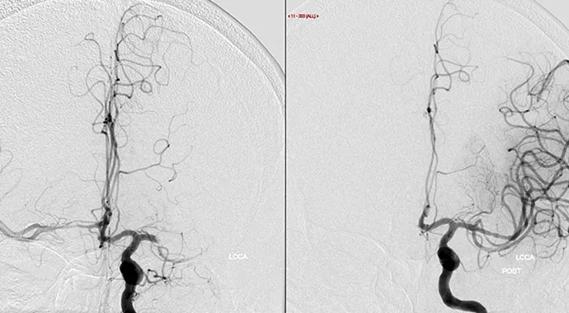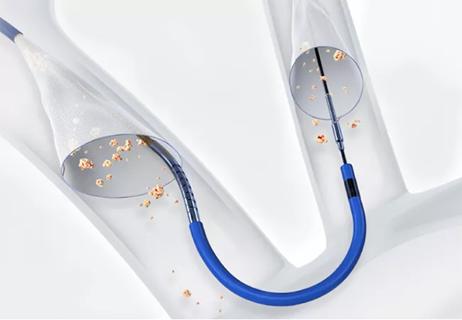Case illustrates essentials of the low-risk, high-potential procedure when paired with rehab
For patients grappling with chronic deficits following ischemic stroke, the long-term prognosis for functional recovery has been limited, often plateauing after the acute rehabilitation phase. While acute stroke care has advanced significantly with interventions like thrombolytic therapy and endovascular procedures, options for restoring function in the subacute and chronic phases have chiefly been restricted to intensive physical rehabilitation.
Advertisement
Cleveland Clinic is a non-profit academic medical center. Advertising on our site helps support our mission. We do not endorse non-Cleveland Clinic products or services. Policy
That is changing, however, with the advent of vagal nerve stimulation (VNS) paired with physical rehabilitation. This combination intervention offers new hope for more meaningful recovery after ischemic stroke, particularly in upper extremity function. Its efficacy was demonstrated in the VNS-REHAB pivotal trial (Lancet. 2021;397:1545-1553), leading to FDA approval of the Vivistim® Paired VNS System for use in stroke survivors. The system involves surgical implantation of a pacemaker-like stimulator followed by targeted neuromodulation during rehabilitation.
Cleveland Clinic recently performed what is believed to be Ohio’s first commercial implantation of this VNS device for stroke recovery, recapped below.
A 71-year-old male restaurant owner had an ischemic stroke affecting the left side of his body in December 2023. Following discharge after a brief hospital stay, he spent three weeks in a rehabilitation hospital, after which he continued physical rehabilitation at home. Despite these interventions, he reported that he “couldn’t walk very well” and spent most of his time in a wheelchair. Function of his left upper extremity was also severely restricted, but his speech and memory were unaffected.
He eventually heard about VNS for stroke recovery from a restaurant customer and learned that Cleveland Clinic was offering VNS system implantation and rehabilitation. He met with cerebrovascular neurosurgeon Mark Bain, MD, who determined he would be an appropriate candidate for VNS, particularly as rehab-related recovery of his left upper extremity lagged far behind that of his lower extremity.
Advertisement
In late April 2025, 16 months after his stroke, the patient underwent Vivistem implantation by Dr. Bain, performed under general anesthesia. To access the vagus nerve, a small horizontal neck crease incision was made at the level of the cricoid cartilage. After Dr. Bain identified the nerve, he wrapped the device’s stimulation lead around it. The lead was tunnelled under the skin to connect to the system’s small battery, which was implanted in the upper chest just below the clavicle. The procedure lasted between 60 and 90 minutes; after brief monitoring, the patient was discharged home the same day.
The patient described his surgical recovery as “pretty painless,” marked chiefly by throat numbness and mild difficulty swallowing for several days. Two weeks after implantation, following sufficient postoperative healing, the patient began upper extremity occupational therapy with the VNS system activated. After baseline testing/adjustment of the stimulator, he started six weeks of intensive therapy consisting of three 1.5-hour sessions per week with an occupational therapist (in clinic) supplemented by 30-minute sessions at home including tasks like those practiced in clinic.

When interviewed three weeks into his six weeks of intensive in-clinic therapy, the patient reported small but noticeable improvement in his upper extremity function. “I am able to move my arm all the way around to do things,” he said. “Some therapy exercises are getting easier, and I’m able to pick things up more easily. It’s getting better every day, but I’m still passively assisting with my right hand, so it still has a long way to go, but we’re only three weeks in.” He reported that his leg function seemed to be improving as well, and he now often can use a walking stick instead of a wheelchair to get around.
Advertisement
The patient looked forward to completing his six-week intensive therapy in clinic and then continuing therapy at home with the stimulator activated, in hopes of maximizing his benefit from the treatment. His goal is to ultimately return to doing some prep work as a cook in his restaurant. “That’s one of the reasons I was really interested in anything that would help with my arm and hand movement,” he said.
The core principle behind VNS for stroke recovery is its ability to induce neuroplasticity. While the exact mechanisms are not fully understood, preclinical studies indicate that stimulation of the vagus nerve can triple connectivity in the corticospinal tract, fostering new connections among neurons in motor areas. “The effect doesn’t seem to be localized or dependent on the stroke’s laterality but is believed to be a global response in the brain,” Dr. Bain explains.
A critical aspect of the intervention is appropriate pairing of VNS with intensive physical rehabilitation. The stimulator is activated only during rehab sessions (in clinic or at home) by the patient or therapist using a small wand waved over the implanted battery. This targeted activation during movement is what amplifies the rehabilitative effect. During the initial rehab session, threshold testing is performed to set the optimal stimulation intensity, typically just below the level that causes hoarseness or nerve pulling.
Identifying appropriate candidates for VNS is key for optimal outcomes, Dr. Bain says. He outlines the following eligibility criteria:
Advertisement
An additional consideration is access to a multidisciplinary approach to care, as successful VNS for stroke recovery generally requires a stroke neurologist, a neurosurgeon, occupational therapists and a physiatrist for optimal screening, surgical intervention, and postoperative care and therapy. Occupational therapists play a pivotal role, guiding patients through repetitions of movements while precisely triggering the VNS to coincide with these actions.
Dr. Bain notes that the above criteria make for a broad indication. “Implantation of the VNS device is a straightforward, low-risk, minimally invasive outpatient procedure, making it a viable option for many survivors of ischemic stroke,” he says, adding that he had implanted the device in five patients as of mid-June 2025.
The VNS-REHAB trial showed that about twice as many patients receiving VNS plus rehab achieved clinically meaningful improvement in upper extremity impairment compared with patients receiving rehab with sham stimulation. Almost half of patients in the active VNS group were found to have a clinically meaningful response.
While current evidence primarily supports VNS for upper extremity function, anecdotal reports suggest potential improvements in lower extremity function and speech as well. Effects on these other impairments are expected to be assessed in further trials. The optimal duration of VNS use and peak of benefits are also being studied.
The bottom line, according to Dr. Bain, is that VNS represents a valuable addition to the comprehensive management of post-stroke deficits, offering meaningful functional gains to a population often desperate for new options. “Because it’s a very low-risk and minimally invasive procedure, I would be quite inclined to pursue this option if I or a loved one had deficits after an ischemic stroke,” he says. “The doubled likelihood of meaningful gains over rehabilitation alone is a promising prospect from a low-risk procedure.”
Advertisement
Advertisement

Tasked-based therapy improves social connection and quality of life

LAA closure may be compelling option in atrial fibrillation ablation patients at high risk of both stroke and bleeding

New analyses confirm preservation of ablation outcomes, broaden data on bleeding benefits

Increasing treatment options are extending the window for continued functional gains

Study links large artery atherosclerosis and delayed presentation to poorer treatment results

$3.2 million grant will fund use of calcium-based imaging to record neuronal activity in ischemia model

Findings from large cohort analysis can guide ongoing quality improvement initiatives

Analysis of STS/ACC TVT Registry finds greatest benefit in patients with prior stroke